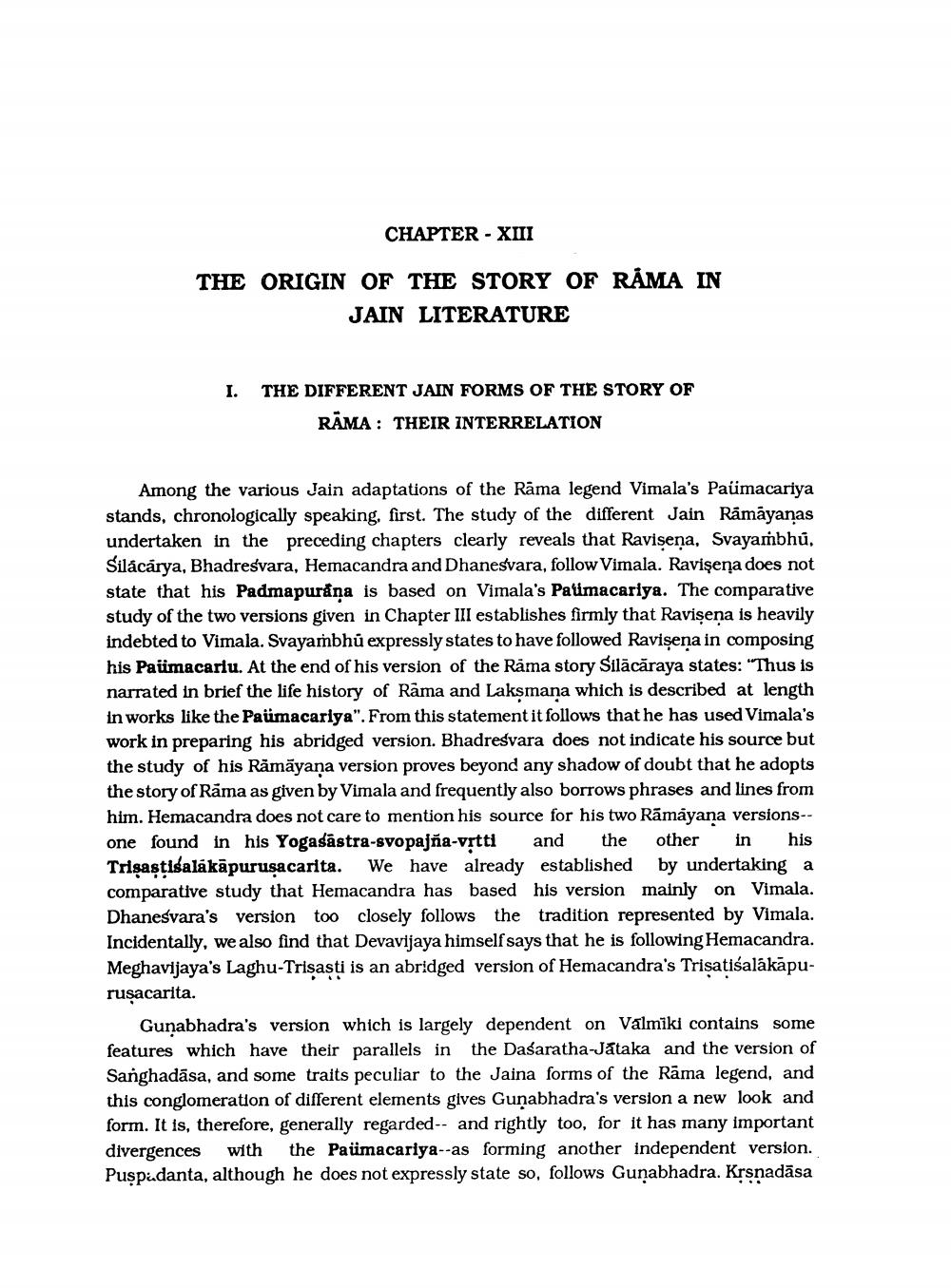________________
CHAPTER - XIII
THE ORIGIN OF THE STORY OF RÅMA IN
JAIN LITERATURE
I. THE DIFFERENT JAIN FORMS OF THE STORY OF
RĀMA: THEIR INTERRELATION
Among the various Jain adaptations of the Rama legend Vimala's Paúmacariya stands, chronologically speaking, first. The study of the different Jain Rāmāyanas undertaken in the preceding chapters clearly reveals that Ravisena, Svayambhu, Silácárya, Bhadresvara, Hemacandra and Dhanesvara, follow Vimala. Ravişena does not state that his Padmapurána is based on Vimala's Paumacarlya. The comparative study of the two versions given in Chapter III establishes firmly that Ravişena is heavily indebted to Vimala. Svayambhú expressly states to have followed Ravişena in composing his Paumacarlu. At the end of his version of the Rāma story Silācăraya states: "Thus is narrated in brief the life history of Rama and Laksmana which is described at length in works like the Paümacariya". From this statement it follows that he has used Vimala's work in preparing his abridged version. Bhadresvara does not indicate his source but the study of his Rāmāyana version proves beyond any shadow of doubt that he adopts the story of Rāma as given by Vimala and frequently also borrows phrases and lines from him. Hemacandra does not care to mention his source for his two Rāmāyana versions - one found in his Yogasāstra-svopajňa-vitti and the other in his Trişaştisalákāpuruşacarita. We have already established by undertaking a comparative study that Hemacandra has based his version mainly on Vimala. Dhanesvara's version too closely follows the tradition represented by Vimala. Incidentally, we also find that Devavijaya himself says that he is following Hemacandra. Meghavijaya's Laghu-Trisasti is an abridged version of Hemacandra's Trisatiśalákāpuruşacarita.
Gunabhadra's version which is largely dependent on Valmiki contains some features which have their parallels in the Dasaratha-Jataka and the version of Sanghadāsa, and some traits peculiar to the Jaina forms of the Rāma legend, and this conglomeration of different elements gives Gunabhadra's version a new look and form. It is, therefore, generally regarded -- and rightly too, for it has many important divergences with the Paümacariya--as forming another independent version. Puşpadanta, although he does not expressly state so, follows Gunabhadra. Krsnadāsa




